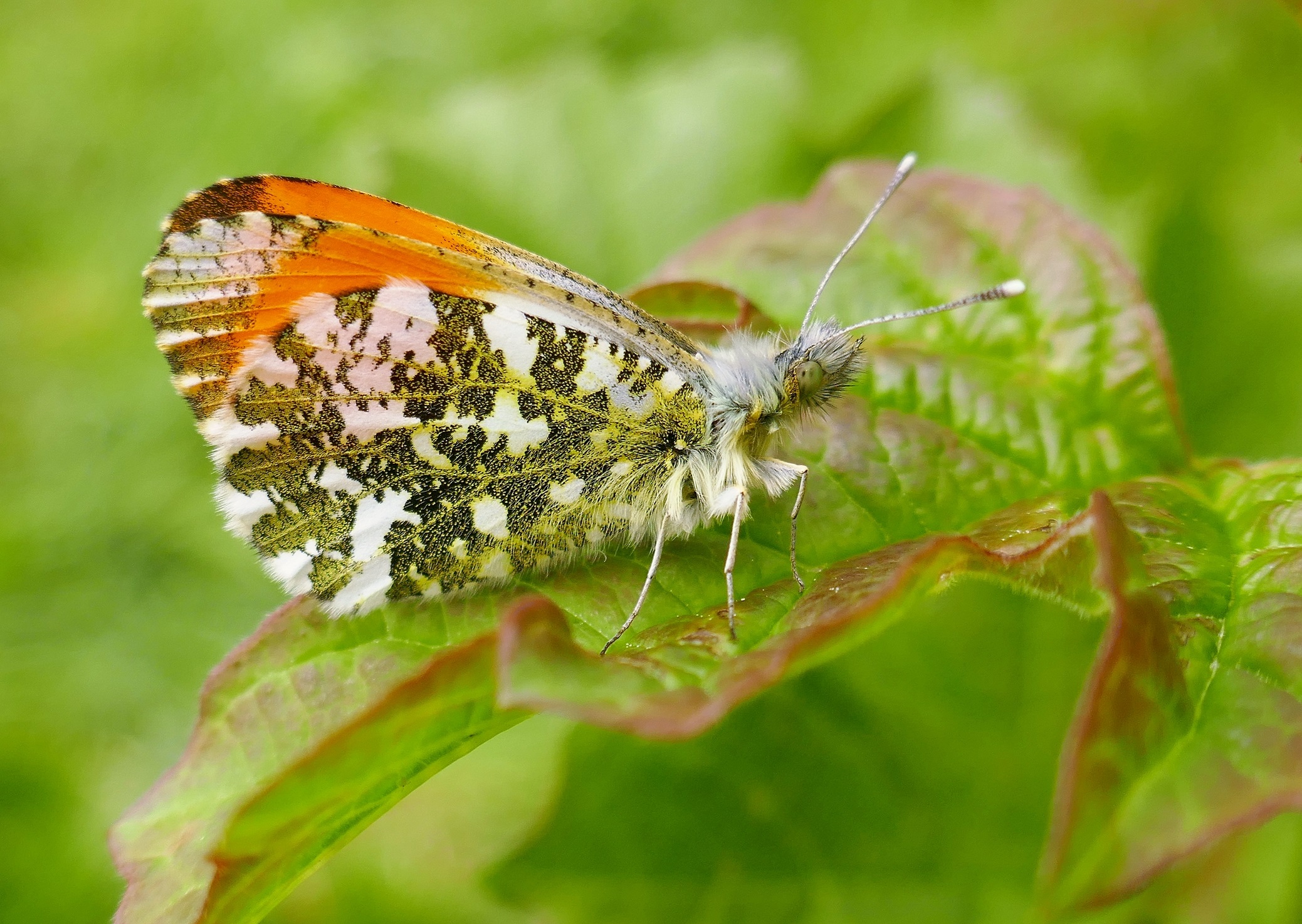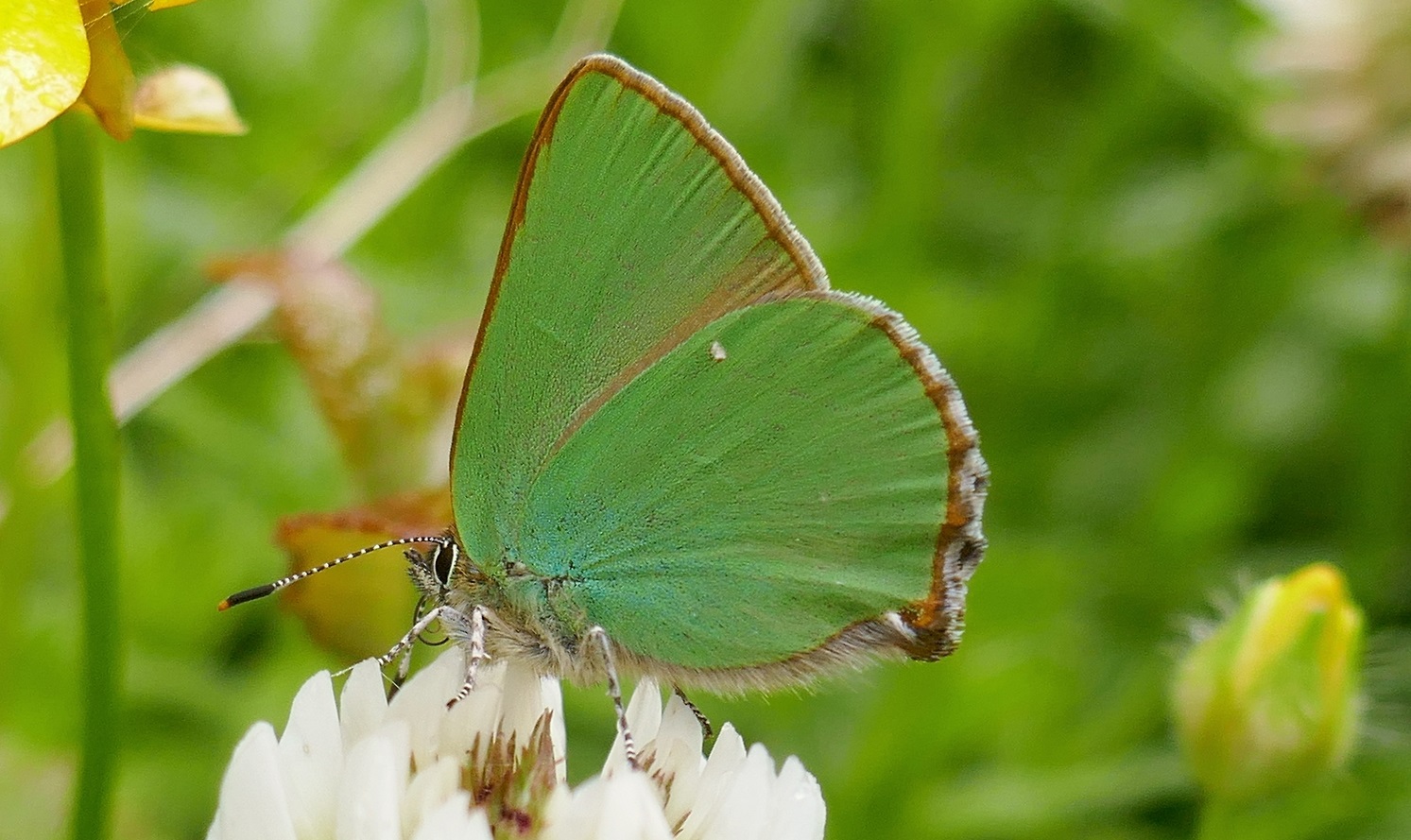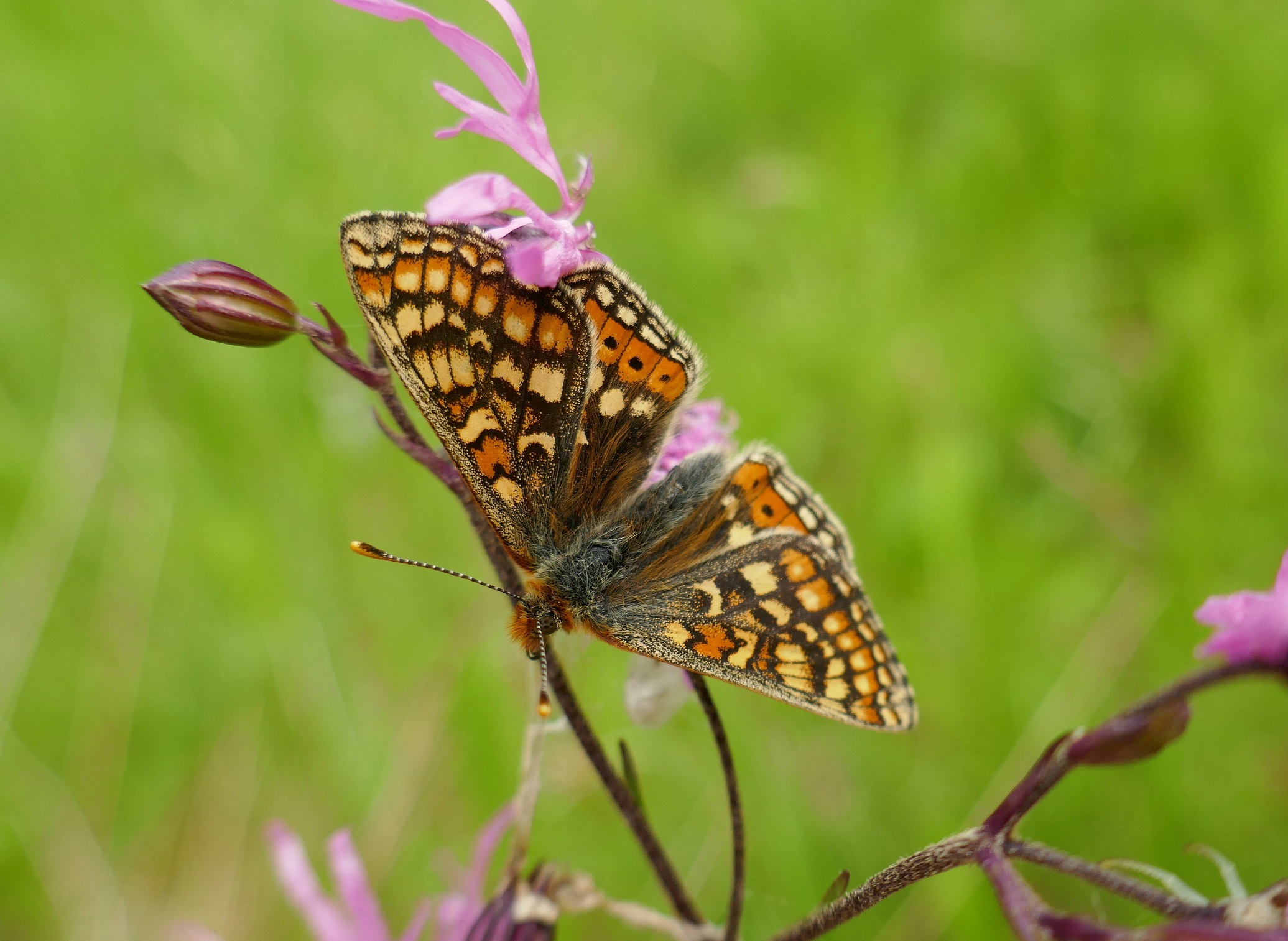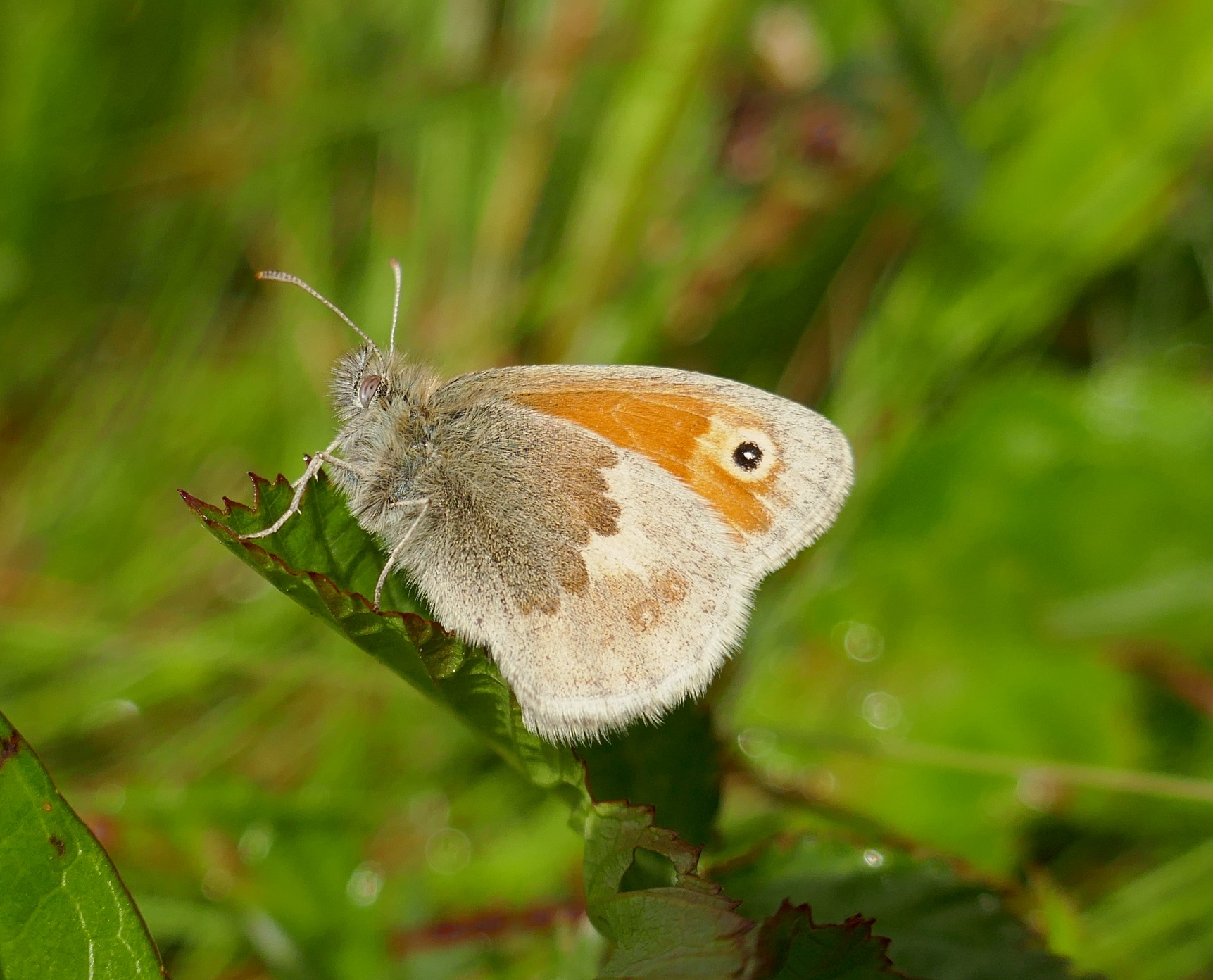The bramble is in bloom on Ireland’s highways, Cross-leaved Heath is flowering on our wet heaths and bogs, buttercups are starring in old pastures and our limestone areas are awash with trefoil, vetches, cranesbills, and Burnet Rose. There is a gap in June vacated by the spring butterflies being on their last wings while summer species have not entered the fray, so June can be eerily quiet in our countryside. The Meadow Brown is just beginning to bob jerkily around the grasses and flowering bramble, while the Ringlet is not out yet. We are awaiting our first Dark Green Fritillaries and while the Small Tortoiseshells are hatching, they are mainly beyond the public eye, staying close to their breeding plants in the fields and staying away from our gardens and flowery grasslands.
There are some serious delights to be savoured, however, and here we feature some.
The first may seem an odd choice. Mainly a spring species, the Orange-tip can be found flying throughout June, especially on more exposed sites where it may emerge later. One of our loveliest species, there are plenty of larvae to be found on Cuckoo Flower seed pods, on plants in sunny positions.

The male Green Hairstreak is a tiny, hyperactive pugilistic character but the female is less bullish and far likelier to sit quietly in warm sunshine, especially when not egg-laying. The species always perches with closed wings, and one’s first sighting is unforgettable. This one was careful not to land within the field of vision of a crab spider perched on a buttercup; crab spiders are voracious butterfly killers but their peripheral vision is so poor that a butterfly can land adjacent to it without being noticed but passing across its field of vision is lethal. A swift paralyzing bite is delivered to the butterfly’s thorax, and the venom then dissolves its innards. The Green Hairstreak in this photo moved from the buttercup to an adjoining white clover, avoiding the spider. The Green Hairstreak should be sought on bogs and wet heaths, especially near scrub.

A butterfly in flight on our wilder grasslands during June is the Marsh Fritillary. Typically a low flier, males dart wildly across their patch in sunshine but quickly settle when cloud covers the sun. Our only protected butterfly needs help, because our flower-rich grasslands are in poor condition and according to data in a 2019 report by Ireland to the EU, some of these habitats are not doing well. For example, the future prospects for orchid-rich grassland are: Range: poor, Area: bad and Structure and functions: poor. The overall assessment of the conservation status for this habitat is deteriorating. But on Butterfly Conservation Ireland’s reserve at Lullybeg, the species is happily booming in 2022. Over 100 were spotted on one day in late May. Here is a male on Ragged Robin.

Finally, a humble member of the brown family, the Small Heath. Again, this one needs watching because land-use changes generally destroy its preferred habitat, grassland on infertile, unpolluted soils. This is one of those butterflies that we used to take for granted. Not any more.

If you see any of these butterflies, why not let us know? Our Records page shows you how to send your records: see https://butterflyconservation.ie/wp/records/
Happy hunting!

